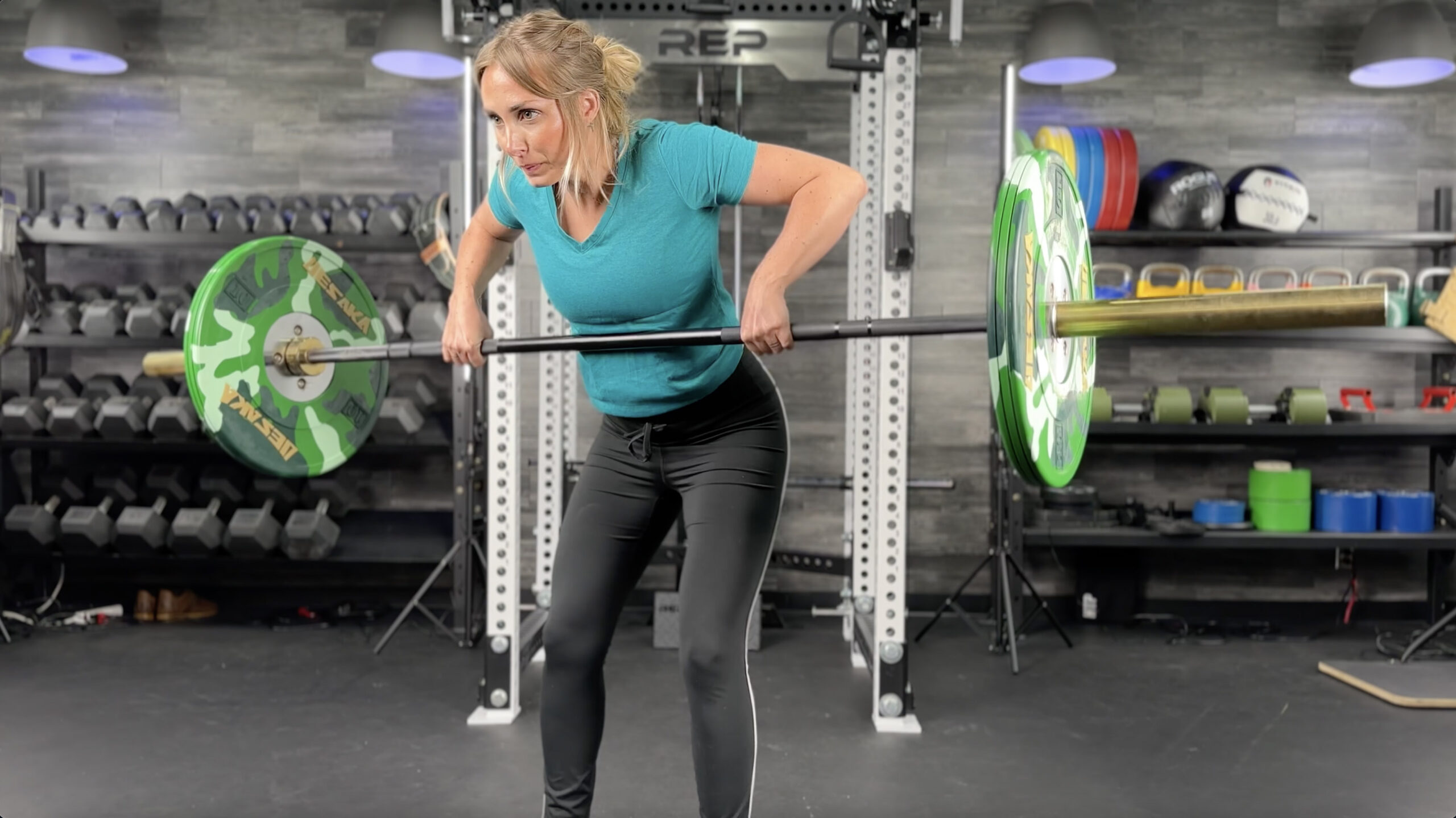We test and review fitness products based on an independent, multi-point methodology. If you use our links to purchase something, we may earn a commission. Read our disclosures.
In the pantheon of strength training, certain lifts rightly take the power seat in the Olympus Cafe. While some may quibble over semantics (front squat, close grip, etc.), most of the fitness world can agree that the squat, deadlift, bench press, overhead press, power clean, and pull-up lock down 6 of the top 10 positions.
Also agreed upon, but only spoken of in hushed tones as relates to the others, is the barbell row.
While the internet proliferates with articles on deadlift form and the importance of pull-ups, relatively little press is given to how to barbell row, or why it deserves a spot in practically every workout routine.
I’m here today to BOR you with those details. (Get it? BOR? For bent over row?) Let’s dive in.
How To Barbell Row
The bent over barbell row (BOR) tells you everything you need to know about barbell row form; you bend over and row a barbell to your chest.
- Start with the barbell on the ground. Using bumper plates is a good idea to get the bar up to a good height.
- Then step up to the bar the same way you would for a deadlift, with feet shoulder-width apart.
- Next, reach down and grab the bar with a double overhand grip. Be sure to keep your back straight.
- Deadlift the bar up to your waist (straight arms, please).
- Push your hips backward to lower the bar to around knee height. This is your starting position.
- Try to squeeze a quarter between your shoulder blades and pull the bar to your sternum.
- Control the weight back to the starting position for all repetitions.
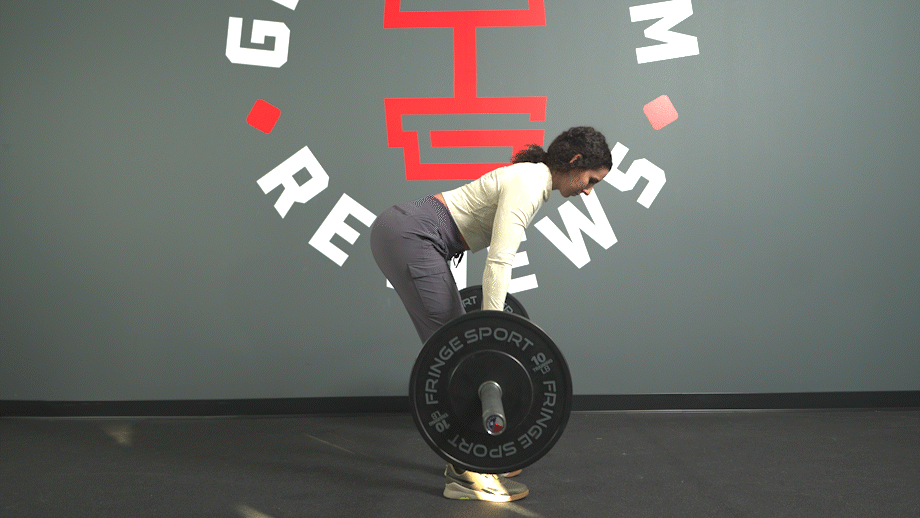
Trainer Tips for Form
I think of the bent over row as a “grip it and rip it” movement. It’s the ultimate “functional movement” you can do with a barbell; don’t ruin it by treating it like a machine.
Think of the Grip Like an Inverse Bench Press
I typically start lifers with a grip the same width as their bench press. After all, this is the same movement pattern with the force vectors going in the opposite direction.
If I just blew your mind, go ahead and take a minute. It’s cool.
Grip width may or may not matter for rows1, but this width is a great place to start.
Remember, it’s a Full-Body Movement
Beginners should definitely focus on good form throughout the movement. Once you feel good about the form and weight, and if you want a stronger back, don’t worry about keeping the movement strict, like you would with a lat pulldown. Go ahead and use a little bounce in your knees and hips. After all, you would never pick anything other than a barbell off the ground without doing that, would you? This is a compound, full-body movement. Embrace it.
Nobody is telling you to use bad form, but using some hips isn’t “cheating” in the same way using leg drive in a bench press isn’t “cheating.” Remember, your upper back muscles are working as a primary agonist and as a stabilizer while you hold the weight with a straight back. A little body English isn’t going to change that.
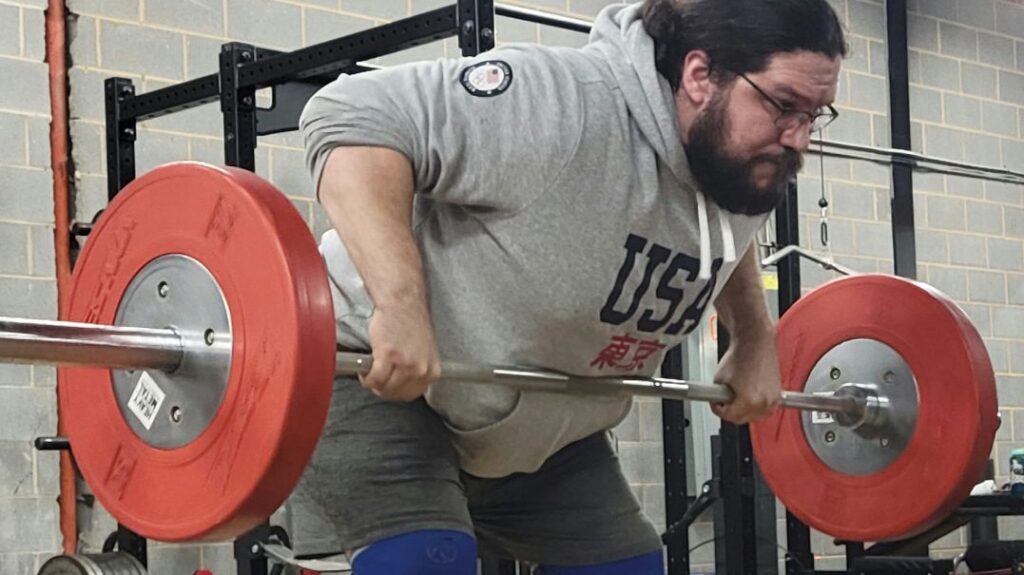
Become a Marionette
You’ll often hear other cues like “drive with the elbows” or “squeeze your shoulder blades together.” These are to get you to pull from your back, not from your biceps.
What helps me is to imagine strings going from the ceiling through my shoulders to my hands. This helps me start the motion at the highest point of the pull (my upper back) and send energy all the way down to the bar.
As long as you imagine your puppeteer directly overhead, this cue also helps keep you in a horizontal rowing position.
RELATED: How to Do Hammer Curls
Common Barbell Row Mistakes
The most common mistake is just not doing barbell rows at all. After that, be on the lookout for these issues:
Making It an Upright Row
What often happens during the barbell row is getting into a more upright posture (especially as you get fatigued) and kind of shrugging the bar into your hip crease. You end up looking like one of those perpetual motion birds that drinks from a cup of water.
Think about a bench press or an inverted row. In fact, think about doing an inverted row while you’re bringing the bar to your chest during a bench press.
Now think about a bent over row. With proper row technique, the bar should have hit similar landmarks on the upper body.
Not Using Enough Load
This is strictly my opinion: The mid and upper back tend to respond well to heavier loads2. The barbell row can be effectively programmed more like the squat or bench press than the cable low row. Rather than making it an afterthought, lifters can use it as a main movement and steadily progress the weight up within a smaller rep range.
If you’re new to the movement, lower weight and higher reps is the way to go. Once you get comfortable, try moving the barbell row to the first or second lift of the day and keeping the reps in the 3-6 range.
Not Using Enough Frequency
As stated above, the mid and upper back can take a beating. Basically, all free weight motions will tax the lats, rhomboids, traps, low back, and abs. Absurdly, the upper back is also often the weak point in every lift!
Feel free to do some kind of row every time you walk in the gym to lift weights. Your back will be able to take it.
Barbell Row Variations
“A rows is a rows is a rows.”
-Gertrude Stein
As Ms. Stein says, here are endless row variations you can use to build a strong back.
Pendlay Row
For most of my life, when I used the phrase “barbell row” I was describing a Pendlay row (and this was long before I knew who Glenn Pendlay even was).
Think of a Pendlay row kind of like a bent over high pull. The weight starts and stops on the ground with every rep, and you use a lot of leg drive to assist the bar into your chest. Take care not to let the weight round your lower back over, as you may find yourself in a more bent over position than the barbell row outlined above.
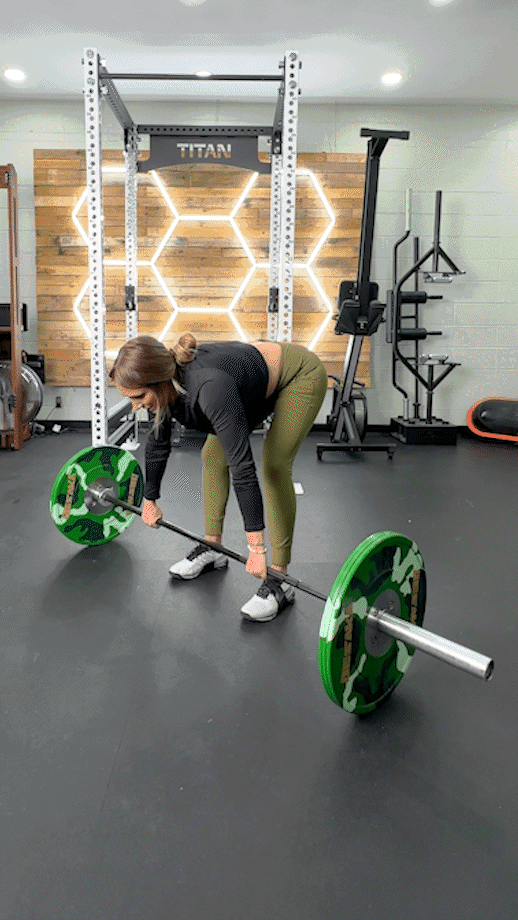
Yates Row
Yates rows are more than just underhand grip rows. You can’t really call it a Yates row if you’re doing 3 sets of 15 reps. Dorian Yates was well-known for high-intensity training, and would work up to one all out set with the heaviest weight he could manage. He built one of the most famous backs in the world with his Yates rows, but he also tore the hell out of his biceps with them.
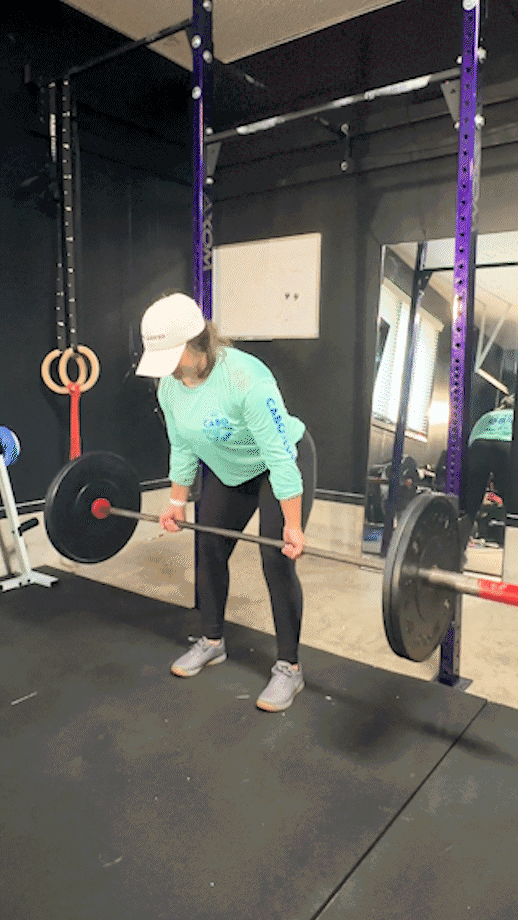
Dumbbell Rows
Dumbbell rows may be the most common free weight row seen in the gym, and have the advantage of allowing the lifter to use a neutral grip. It can be easier to “feel” the lat muscle by taking a deep stretch at the bottom of the dumbbell row than with two-handed rows.
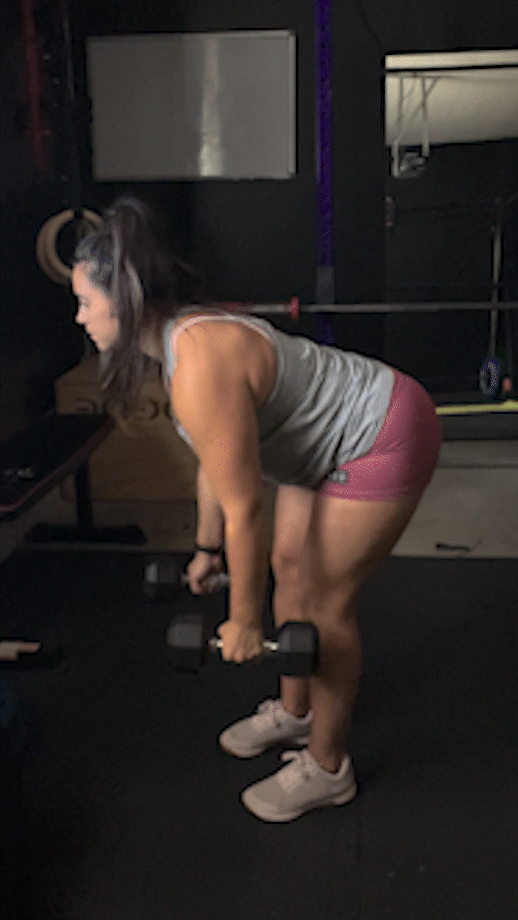
Useful Barbell Row Equipment Accessories
Paradoxically, the two best accessories for the barbell row are lifting straps and Fat Gripz.
VERY often, your grip is the first thing to go when working hard while doing BORs. Grip training is essential for powerlifters and grapplers (to name a few), but you don’t want it to always limit the gainz you need to make with your back exercises.
It’s easy to fry your grip, and once it goes for the day it’s not usually coming back. As a rule of thumb I tend to not use straps for the main lift of the day, then throw them on for the assistance work.
Fat Gripz
Fat Gripz
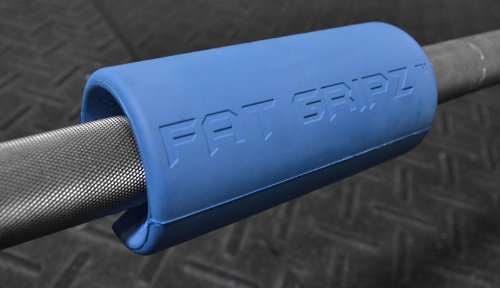
Product Highlights
Made from a military-grade, high-density compound, Fat Gripz can instantly transform any standard barbell into an axle bar (thick bar). They also fit most dumbbells, pull-up bars, and cable attachments, – doubling the thickness for a greater test of arm and grip strength.
Pros & Cons
Pros
- Easy to use
- Helps develop forearms
- Durable material
Cons
- May not fit all dumbbells
- Can be difficult to install and remove
Bottom Line
Fat Gripz offer a convenient way to train your grip strength with a standard barbell. They’re very durable, easy to use, and work with most, but not all, dumbbells.
On the opposite side of the spectrum, Fat Gripz (or an axle/fat bar) allows you to train the heck out of your grip. This is obviously great for strongman competitors (where thick handles are a part of the sport), and it’s still a great modality to train for gen pop3. By forcing yourself to hang onto the thick bar for dear life, you might notice different muscle activations in your back.
One more accessory for home gym owners: a landmine attachment. These are cheap (and even cheaper if you DIY it). These let you perform makeshift t-bar rows without the expense and footprint of a chest supported row machine. T-bar rows take away some of the spinal loading of barbell rows and just feel really good.
FAQs: How to Do a Barbell Row
What muscles does a barbell row work?
Lats, rhomboids, and rear delts should be the prime movers (these are called “pulling muscles”). You get a nice static hamstring pump from stabilizing your body through the lift. It can be difficult to not allow the biceps to take over more than they deserve, but they definitely shouldn’t be a focus of the lift.
Since you’ll be holding your trunk somewhere between a 45-degree angle and a 90-degree angle, your hamstrings and glutes will actually light up, especially on long sets. This is a big reason why the barbell row is such an effective assistance exercise for the deadlift.
Are barbell rows effective?
Barbell rows are a brutally effective compound exercise. For my money, using lighter weights isn’t as effective as pushing the amount of weight you can keep proper form using. Back muscles are really hardy and benefit from increased load.
What are the benefits of barbell rows?
A strong back and increased grip strength (which benefit sports such as powerlifting and Olympic weightlifting) are the primary advantages.
Barbell rows are also a great way to build muscle mass all over your body. Much like squats work far more than just your quads, the barbell row not only works the muscle groups of your upper and mid back, the straight back position creates an iso-hold on the erector spinae (the humorous name for the lower back), as well as the hamstrings.
References:
1. Andersen V, Fimland MS, Wiik E, Skoglund A, Saeterbakken AH. Effects of grip width on muscle strength and activation in the lat pull-down. J Strength Cond Res. 2014 Apr;28(4):1135-42. doi: 10.1097/JSC.0000000000000232. PMID: 24662157.
2. Schoenfeld BJ, Wilson JM, Lowery RP, Krieger JW. Muscular adaptations in low- versus high-load resistance training: A meta-analysis. Eur J Sport Sci. 2016;16(1):1-10. doi: 10.1080/17461391.2014.989922. Epub 2014 Dec 20. PMID: 25530577.
3. Laukkanen JA, Khan H, Lavie CJ, Voutilainen A, Kurl S, Jae SY, Kunutsor SK. Inverse Association of Handgrip Strength With Risk of Heart Failure. Mayo Clin Proc. 2021 Jun;96(6):1490-1499. doi: 10.1016/j.mayocp.2020.09.040. Epub 2021 Mar 26. PMID: 33775422.
Further reading

Looking for the answer to “How often should you work out?” A CPT explains how much the average adult should exercise, and describes the benefits of working out. Read more

In this Nutricost BCAA Review, find out what our tester thought of this ultra-affordable branched-chain amino acid supplement. Read more

Need help understanding the different types of exercise bikes? Our detailed guide will help! Read more

Looking for the best treadmill under $1,000? We got you. Check out our top seven picks for some stellar, budget-friendly options. Read more

